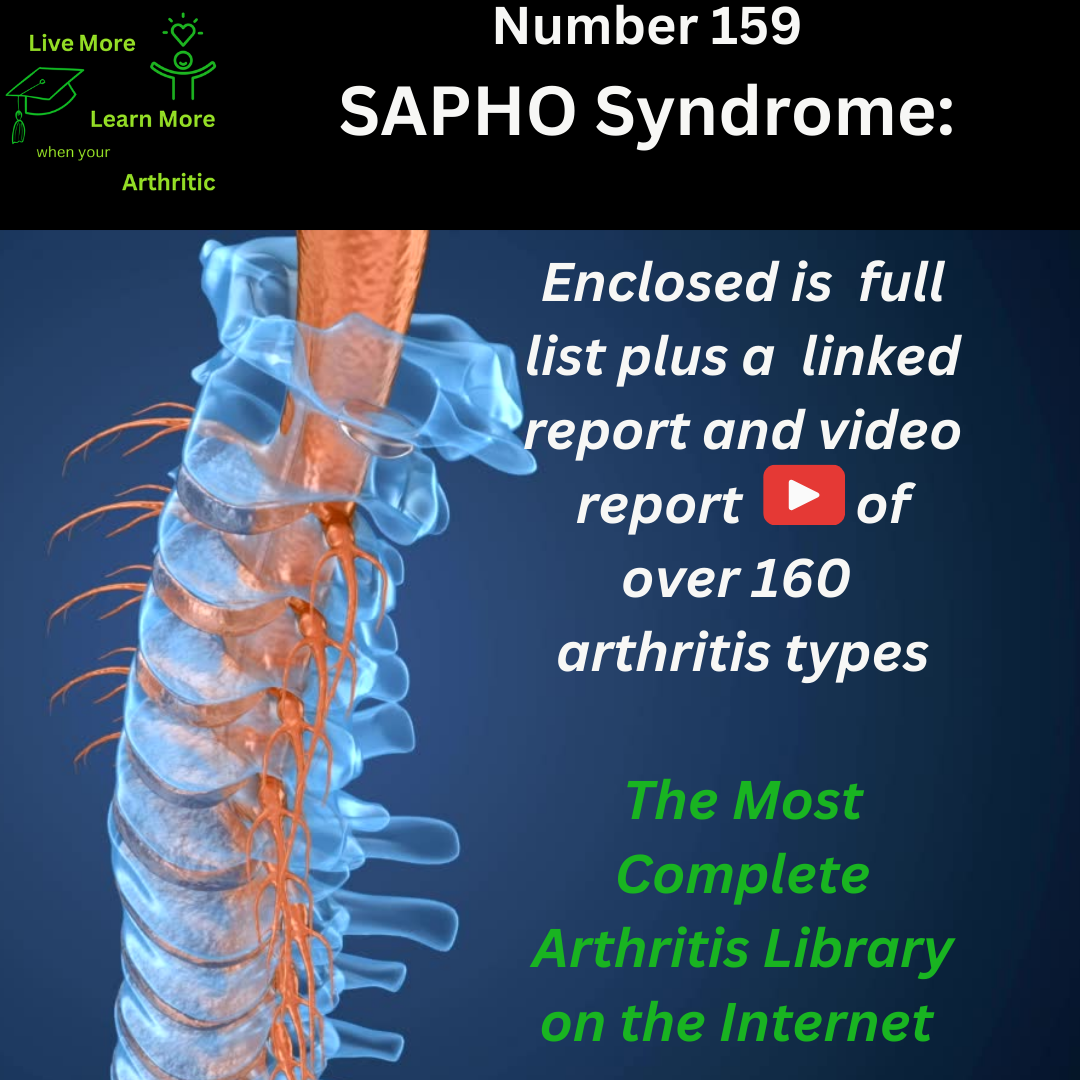
SAPHO Syndrome: Number 163 Type of Arthritis
Exploring SAPHO Syndrome: A Complex Arthritis Condition
SAPHO syndrome, characterized by a combination of inflammatory bone disorder (osteitis) and skin manifestations (acne, pustulosis), can overlap with other inflammatory arthritis conditions like psoriatic arthritis and ankylosing spondylitis. These overlaps occur due to shared inflammatory pathways and genetic predispositions, leading to similar clinical features and challenges in diagnosis and management.
 The presence of SAPHO syndrome may increase the risk of developing other health-related issues, including cardiovascular diseases, metabolic disorders, and psychological impacts due to chronic pain and inflammation. Comprehensive care is essential to address these comorbidities and optimize overall health outcomes for individuals with SAPHO syndrome.
The presence of SAPHO syndrome may increase the risk of developing other health-related issues, including cardiovascular diseases, metabolic disorders, and psychological impacts due to chronic pain and inflammation. Comprehensive care is essential to address these comorbidities and optimize overall health outcomes for individuals with SAPHO syndrome.
Inflammatory Nature of SAPHO Syndrome SAPHO syndrome is classified as an inflammatory arthritis due to the immune system’s dysregulation, leading to inflammation in bones and skin tissues. The interaction between inflammatory cytokines, immune cells, and tissue damage contributes to the characteristic symptoms of joint pain, skin lesions, and bone abnormalities.
Affected Body Parts and Symptoms The most commonly affected areas in SAPHO syndrome include the sternoclavicular joints (where the collarbone meets the breastbone), spine, ribs, and sacroiliac joints. Symptoms may include localized pain, swelling, tenderness, skin lesions (acne, pustulosis), and limited range of motion in affected joints.
Remission and Disease Management Achieving remission in SAPHO syndrome involves a multidisciplinary approach, including anti-inflammatory medications, and biologic therapies targeting specific inflammatory pathways. Lifestyle modifications such as stress management, regular exercise, and balanced nutrition are also crucial for improving quality of life.
Causes and Triggers The exact cause of SAPHO syndrome is not fully understood but is believed to involve abnormal immune responses triggered by genetic factors, infections (e.g., bacterial or viral), or environmental factors. Certain medications and hormonal changes may also contribute to disease flares.
Risk Factors and Complications Risk factors for SAPHO syndrome include genetic predisposition, family history of autoimmune diseases, and certain infections. Complications may include chronic pain, joint deformities, osteoporosis, and increased susceptibility to infections due to immune system dysregulation.
Quality of Life and Proactive Approach With a proactive approach that includes early diagnosis, personalized treatment plans, and ongoing disease monitoring, individuals with SAPHO syndrome can achieve a higher quality of life. Engaging in physical therapy, maintaining a healthy lifestyle, and seeking emotional support are essential for coping with the challenges of this chronic condition.
Differences from Primary Arthritis SAPHO syndrome differs from primary arthritis in its distinct clinical features, including the presence of skin manifestations (acne, pustulosis) and characteristic bone changes (hyperostosis, osteitis). This unique combination of symptoms requires tailored treatment strategies and specialized care.
 Demographic Trends and Considerations SAPHO syndrome can affect individuals of any age but often presents in young adults and middle-aged individuals. While the condition may affect both men and women, some studies suggest a slightly higher prevalence in females.
Demographic Trends and Considerations SAPHO syndrome can affect individuals of any age but often presents in young adults and middle-aged individuals. While the condition may affect both men and women, some studies suggest a slightly higher prevalence in females.
In summary, SAPHO syndrome is a complex inflammatory arthritis condition characterized by bone and skin manifestations. Understanding its causes, symptoms, management strategies, and potential complications is crucial for optimizing treatment outcomes and enhancing quality of life for individuals affected by this rare disorder. Early intervention and comprehensive care are key to addressing comorbidities and minimizing long-term health impacts.
